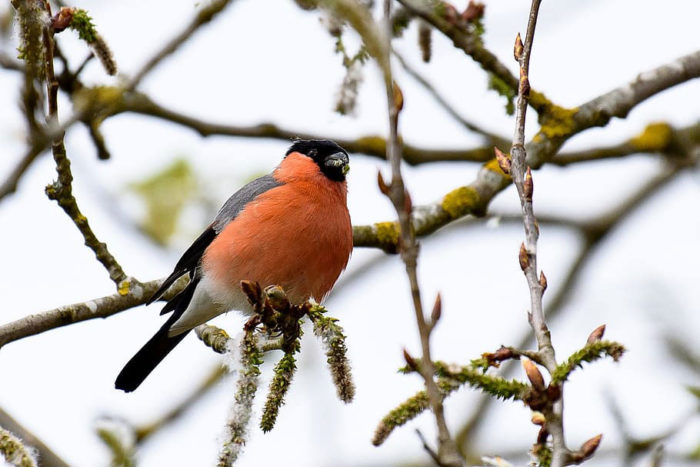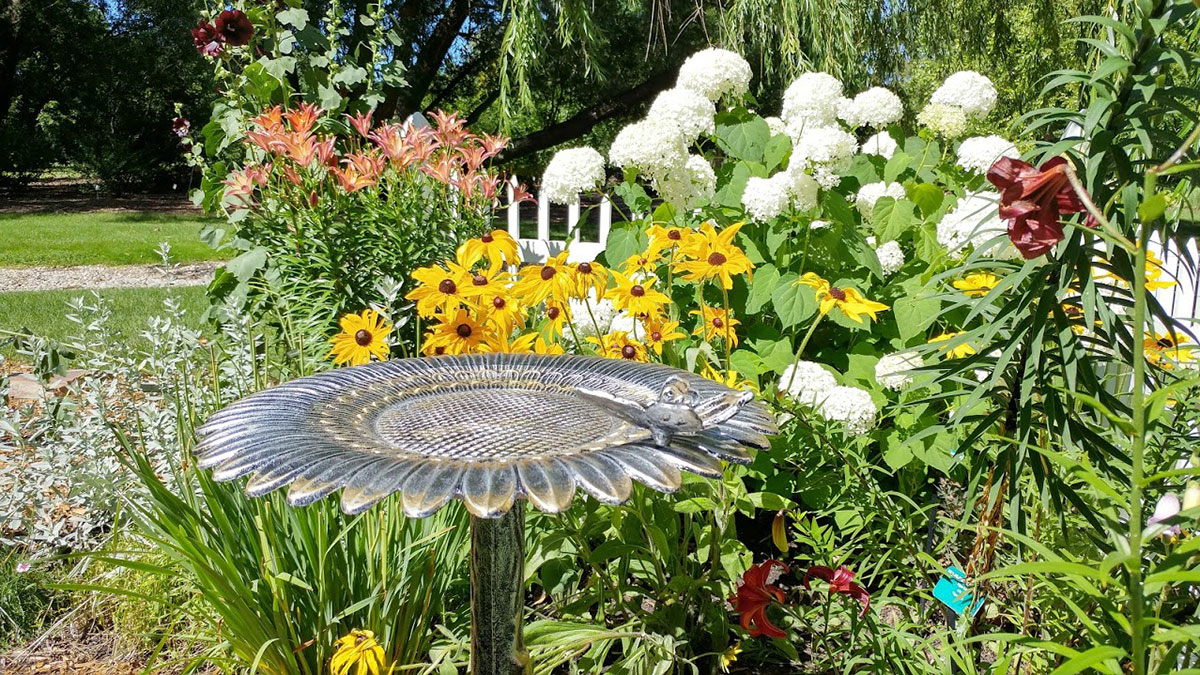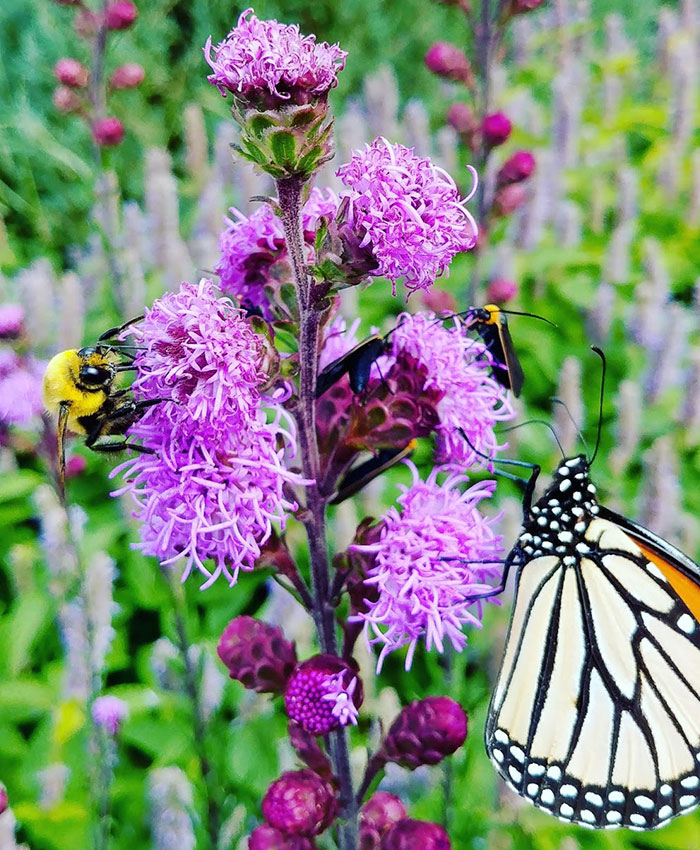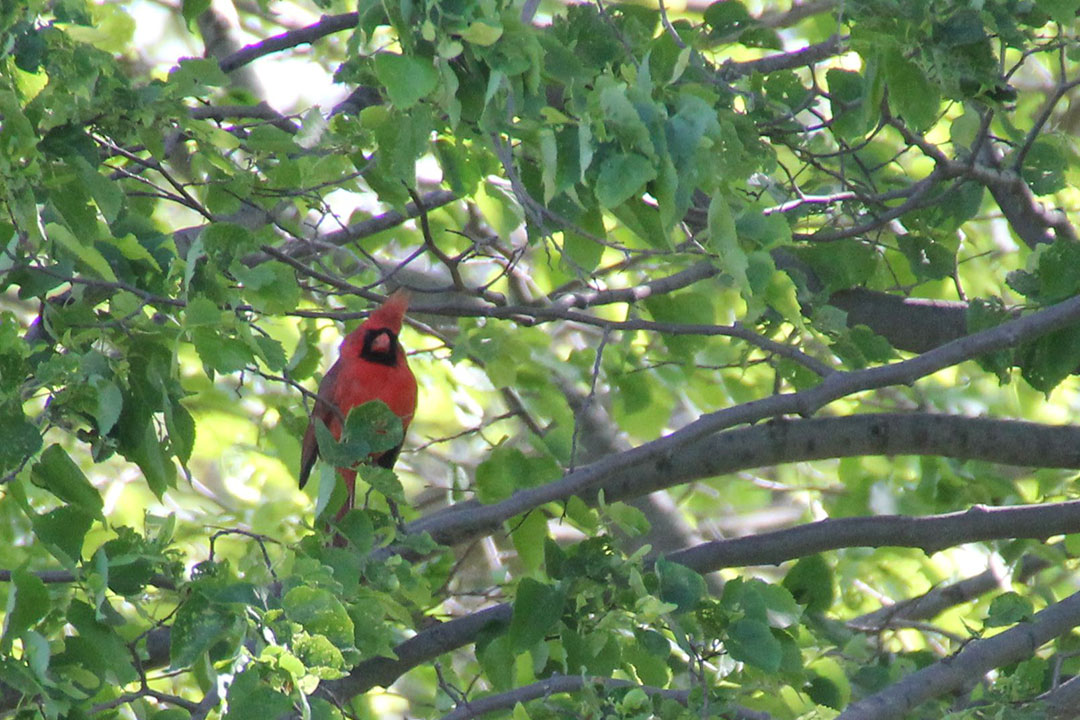
The first thing to think about when designing a songbird garden is creating a haven in which songbirds can raise their young. A mating pair of birds needs to collect between 4,000 to 6,000 caterpillars to raise a nest of chicks, and a landscape full of nonnative plants that receives heavy pesticide use will do very little in providing for that need. I know what you are thinking: “But I don’t want caterpillars in my garden chewing up everything.” This is a valid concern; however, by gardening as naturally and organically as we can, a delicate balance can be obtained in which natural predators such as other insects, bats, birds, reptiles, and amphibians can keep the bad bugs in check. With that in mind, seek out plants that can serve as hosts for native butterfly and moth caterpillars and other larvae to entice songbirds to take up residence in the area. Thankfully, this can easily be accomplished by planting native perennials, shrubs, and trees, which will also provide food, habitat, and nesting sites for songbirds. A few multipurpose host plants include prairie pussytoes (Antennaria neglecta, Zones 3–8), American elderberry (Sambucus canadensis, Zones 3–9), and chokecherry (Prunus virginiana, Zones 2–7).

Once you’ve convinced the parents that this is a great place to raise their young, you then need to look at meeting the other needs of the adults by providing further sources of food and water. Selecting seed-producing and fruit-producing plants in the form of annuals, perennials, vines, shrubs, and trees, with production of sustenance from early spring through winter in mind, will keep the adults close by. Sunflowers (Helianthus spp. and cvs., Zones 2–11), coneflowers (Echinacea spp. and cvs., Zones 3–9), asters (Symphyotrichum spp. and cvs., Zones 3–8), elderberry (Sambucus candensis, Zones 3–9), and staghorn sumac (Rhus typhina, Zones 3–8) are excellent sources for fruit and seed. Birdfeeders can extend the season by filling the gaps in the natural cycles of plant and insect life, while birdbaths with routinely clean water will easily meet bathing and drinking needs. A birdbath or birdhouse can also provide an opportunity to add a piece of interesting art to your garden.

Finally, remember to use a variety of plant heights and add in a strong portion of native grasses, such as little bluestem (Schizachyrium scoparium, Zones 3–9), Indian grass (Sorhastrum nutans, Zones 4–9), and prairie dropseed (Sporobolus heterolepis, Zones 3–9) to persuade the wide range of songbirds of the Northern Plains not only to visit your garden but to take up residence and to flourish. Offer additional food sources and covers that mimic the prairies they typically call home.

Some of the most commonly sighted and easily distinguishable songbirds of the Northern Plains include the Western meadowlark, Northern cardinal, Eastern bluebird, American robin, red-winged blackbird, and Baltimore oriole. The sight and sound of songbirds gracing our gardens is always a welcome delight, and with a little planning and care, a songbird garden will keep them coming back.
—Chris Schlenker is the head gardener of McCrory Gardens at South Dakota State University in Brookings, South Dakota.


















Comments
Log in or create an account to post a comment.
Sign up Log in